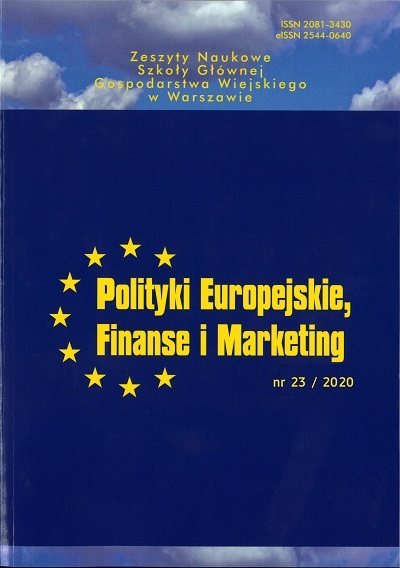Main Article Content
Article Details
Abrantes-Metz R., Kraten M., Metz A., Seow G. (2012), Libor manipulation?, Journal of Banking & Finance, Vol. 36, no. 1, p. 136-150 (Crossref)
Brousseau V., Chailloux A., Durre A. (2013), Fixing the Fixings: What Road to a More Representative Money Market Benchmark?, IMF Working Paper No. 13/131, 29.05.2013 (Crossref)
Duffie D., Stein J. (2015), Reforming LIBOR and Other Financial Market Benchmarks, Journal of Economic Perspectives, Vol. 29, no. 2, Spring, p. 191-212 (Crossref)
EMMI (2017): Position Paper Setting out the Legal Grounds for the Proposed Reforms to Euribor, 8.03.2017
Gandhi P., Golez B., Jackwerth J.C., Plazzi A. (2015), Libor Manipulation: Cui Bono?, Finance Research Seminar, April 2015
GPWB (2017), Regulamin stawek referencyjnych WIBID i WIBOR, 30.11.2017
Hou D., Skeie D. (2014), LIBOR: Origins, Economics, Crisis, Scandal and Reform, Federal Reserve Bank of New York Staff Report No. 667, March 2014 (Crossref)
Kirti D. (2017), What are reference rates for?, IMF Working Paper, WP/17/13, January 2017 (Crossref)
Mielus P. (2016), Dylematy reformy indeksów rynku finansowego, Gospodarka Narodowa, 4/2016, p. 91-114 (Crossref)
Mielus P. (2017), Vicious circle of the benchmark reform, Bezpieczny Bank, Vol. 69, No. 4, p. 108-129
Mielus P. (2018), Behavioural aspects of benchmark quotation – the WIBOR case, Acta Universitatis Lodziensis Folia Oeconomica, 3(335), p. 189-205 (Crossref)
Mielus P., Mironczuk T. (2015), Structure of the cost of deposits in selected EU countries, Bezpieczny Bank 3(60), Warszawa 2015, p. 89-101 (Crossref)
Perkins J., Mortby P. (2015), Evolving financial benchmarks: The impact on legacy contracts, Journal of Securities Operations & Custody, 7.4, Autumn/Fall 2015, p. 296-304 (Crossref)
Regulation of the European Parliament and of the Council (EU) 2016/1011 of 8 June 2016 on indices used as benchmarks in financial instruments and financial contracts or to measure the performance of investment funds
Downloads
- Katarzyna Maj-Waśniowska, Katarzyna Stabryła-Chudzio, IMPACT OF PUBLIC EXPENDITURE ON REDUCING POVERTY IN POLAND , The Scientific Journal European Policies, Finance and Marketing: No. 23(72) (2020)
You may also start an advanced similarity search for this article.
All articles published in European Policies, Finance and Marketing are fully open access. In this way, the scientific research results contained in articles published in our journal are available to every reader free of charge - in accordance with the CC BY-NC license (https://creativecommons.org/licenses/by-nc/4.0/).
According to the CC BY-NC license you are free to:
- Share — copy and redistribute the material in any medium or format
- Adapt — remix, transform, and build upon the material
The licensor cannot revoke these freedoms as long as you follow the license terms.
Under the following terms:
- Attribution — You must give appropriate credit , provide a link to the license, and indicate if changes were made . You may do so in any reasonable manner, but not in any way that suggests the licensor endorses you or your use.
- NonCommercial — You may not use the material for commercial purposes .
- No additional restrictions — You may not apply legal terms or technological measures that legally restrict others from doing anything the license permits.
Source: https://creativecommons.org/licenses/by-nc/4.0/deed.en
According to that, the authors retain the copyright and full publishing rights.





